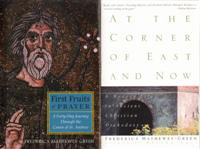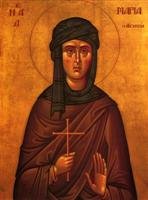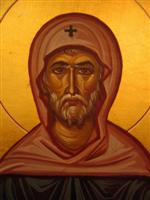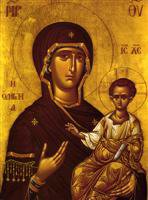 I recently read an article in the Christian Science Monitor, a highly respected source for international news, about a movement supporting the establishment of the Caliphate, a single Islamic nation of 1.5 billion Muslims that would "stretch from Indonesia to Morocco." The article, "The Caliphate: One nation, under Allah, with 1.5 billion Muslims," by James Brandon, is from the May 10, 2006 edition of the paper.
I recently read an article in the Christian Science Monitor, a highly respected source for international news, about a movement supporting the establishment of the Caliphate, a single Islamic nation of 1.5 billion Muslims that would "stretch from Indonesia to Morocco." The article, "The Caliphate: One nation, under Allah, with 1.5 billion Muslims," by James Brandon, is from the May 10, 2006 edition of the paper.On the other hand, the NeoByzantine Movement is dedicated to the formation of Nea Byzantia, a NeoByzantine Union of Orthodox Christian countries. The movement's website, neobyzantine.org, includes information on Orthodox Christianity, the Byzantine Empire, and the NeoByzantine movement itself.
Which empire would you rather live in? (A rhetorical question.)
The actual establishment of such empires may seem unlikely, but the potential influence of these political ideas upon the people of the world is something to consider.
For a good article related to the Byzantine Empire, read Father Joseph Huneycutt's recent article, "Who was Constantine the Great?" on his Orthodixie Blog. The article first appeared on the Da Vinci Dialogue website.
The above image of Hagia Sophia ("the Church of Holy Wisdom"), once among the greatest churches in the Christian world, has been enhanced to show what the church would look like without the four minarets built around it by the Muslims. Hagia Sophia was constructed by the Emperor Justinian in the Imperial City of Constantinople, the capital of the Eastern Christian (Roman) Empire known as the Byzantine Empire. After the Islamic Invasion, Hagia Sophia was converted into a mosque. Today, it is a museum. For Orthodox Christians, it remains a symbol of the day when the Orthodox Christian Faith was the Faith of an Empire. Current photos and a brief history of Hagia Sophia can be found at orthodoxwiki.com. (The larger, original version of the above image is available here on orthodoxwiki.com.)










 We are citizens of the kingdom of heaven, the divine dominion where Christ is King, but right now we are also living as legal residents in the world, a place where human politics influences society and culture. In a healthy society and culture, the Faith shapes politics.
We are citizens of the kingdom of heaven, the divine dominion where Christ is King, but right now we are also living as legal residents in the world, a place where human politics influences society and culture. In a healthy society and culture, the Faith shapes politics.







